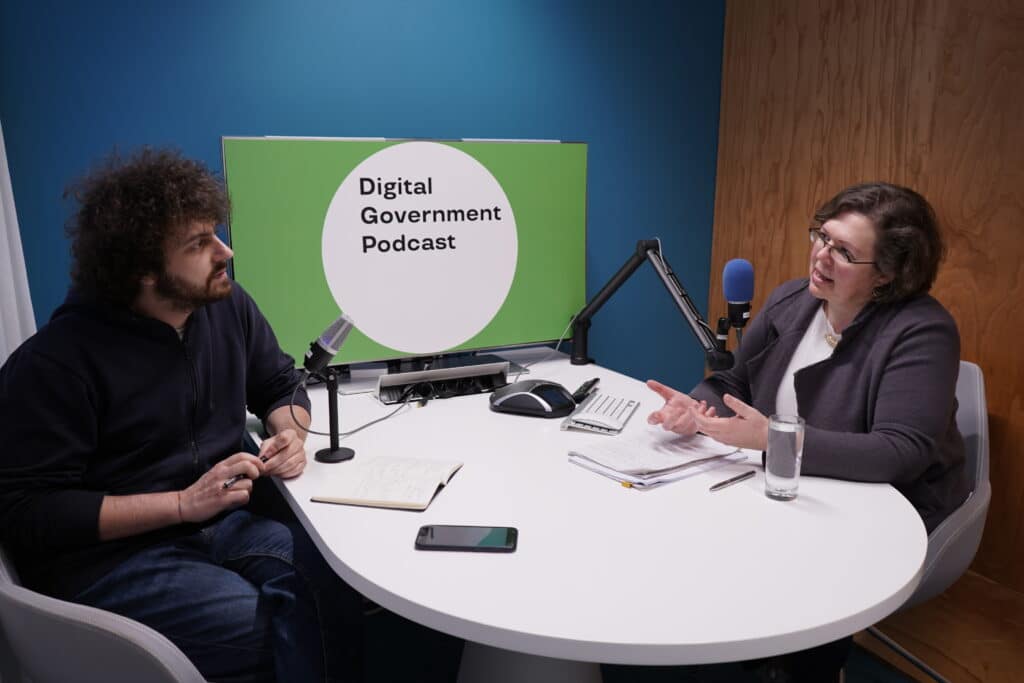
Podcast 🎧 & blog: Addressing digital vulnerabilities to empower citizens
Let’s face it – we are more used to talk about the results achieved through digital transformation, its success stories and business cases, rather than drawbacks or failures. Despite, in any case, a growing trend of re-humanizing digitalization processes, with private change-makers and CIOs increasingly talking about drawbacks and lessons learnt too.
But some needs still might fall between the cracks of a bright narrative. That is why, both through our activities and at this year’s e-Governance Conference, we introduced the topic of digital vulnerability. Kristina Mänd, Senior Expert on e-Democracy at eGA, delves deeper into the theme in this latest podcast episode.

Why does digital vulnerability matter?
“When people are vulnerable, they have less command of their lives, future, decision making. Vulnerability can manifest by means of poverty, low educational levels, social exclusion,” and many more examples of deeply rooted social problems, Mänd begins with.
As a consequence, digital vulnerability must be placed within the framework of such wider issues. “It means that,” due to such disadvantages, “people are not able to fully benefit from digital transformation, and the tools designed to make their lives better,” Mänd says.
Digital vulnerability matters, in particular, if we focus on the availability and usage of public services. Designed to ease the bureaucratic burden on citizens’ lives, many might remain left out of such a process of change and administrative development – deepening existing inequalities, and tapping into already-present situations of hardship.
Three key factors of digital vulnerability
But after introducing the issue more at large, within the context of wider societal and economic problems, we can then focus more specifically on the digital side of it. Three are the key factors to watch out for when governments and Civil Society Organizations (CSOs) aim to fill the digital vulnerability gap.
Starting from awareness, “people might just not know about some of the tools and opportunities that digital solutions may offer. Secondly, they may lack the necessary skills to use those digital tools. And last but not least, there could be a lack of possibilities for access – in terms of devices or internet connection availability,” Mänd explains.
These three factors more saliently “prevent people from reaping in full the benefits of the life and future that the digital should offer you,” Mänd continues.
A measure of government effectiveness and performance
Digital vulnerability may sound simply as a nice to have, something to write in strategy or policy papers as a line that looks good. Assessing and addressing digital vulnerabilities, instead, by all means, could be considered as a measure of government effectiveness and performance in delivering public services.
It’s a matter of both policy and delivery. A matter that, for example, e-Governance Academy is handling with care in Ukraine and Georgia, where governments and CSOs are coming together to find ways to ease the impact of such vulnerability in the weakest strata of the population.
Those affected might, indeed, see a situation even of double disadvantage – where a digital vulnerability might add up to an existing social one. But with the right framework and cooperation in place, more and more people could be empowered in taking advantage of what digital tools have to offer them.
“You cannot leave people behind, you can’t create those vulnerabilities, knowing that you can actually avoid or address them. You cannot keep developing a very specific area or group of people: we cannot make existing divides bigger. That is the big responsibility of this decade, as highlighted by Kofi Annan, former Secretary General of the United Nations,” Mänd concludes.
Listen to all episodes of the Digital Government Podcast here!
New episodes will be launched every Wednesday.
















